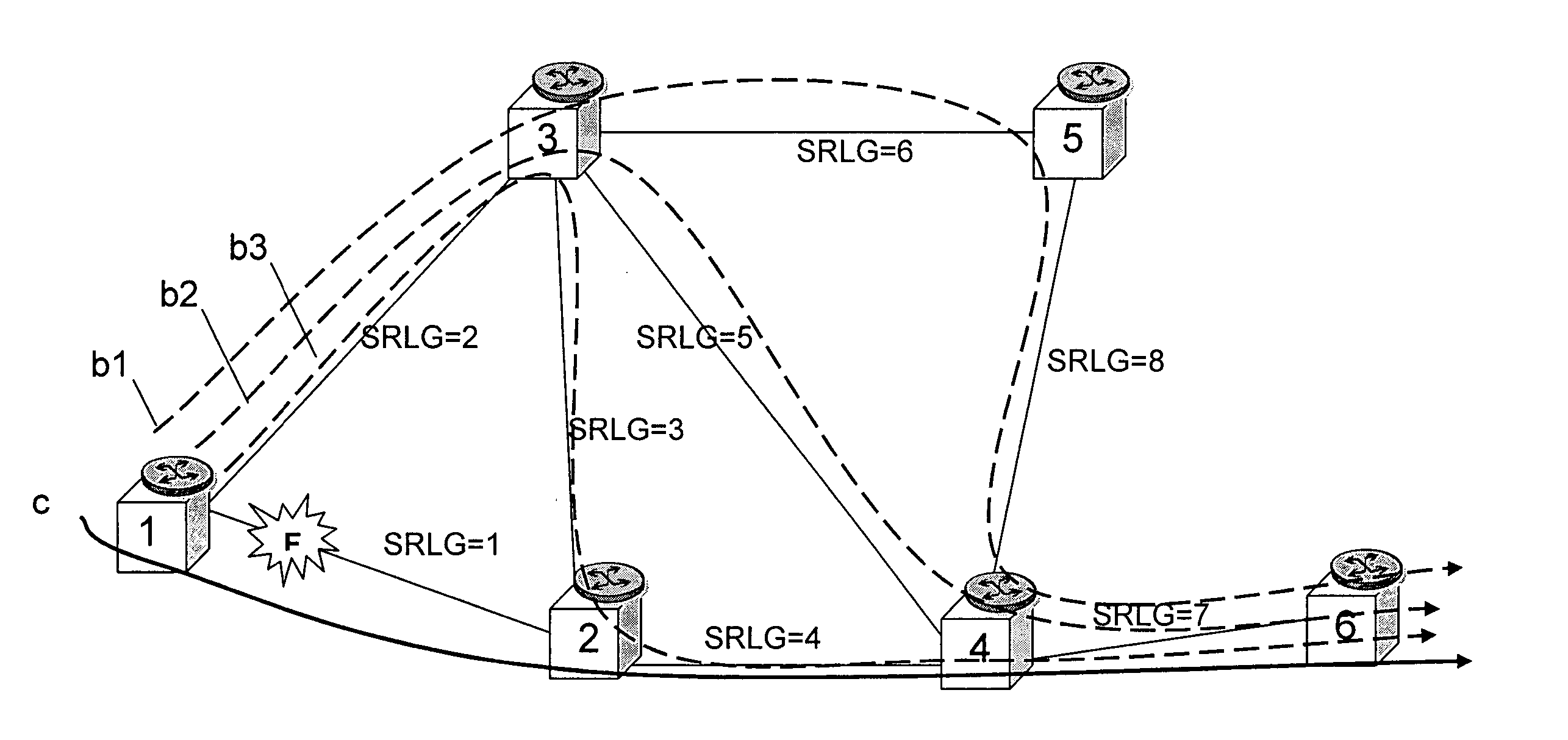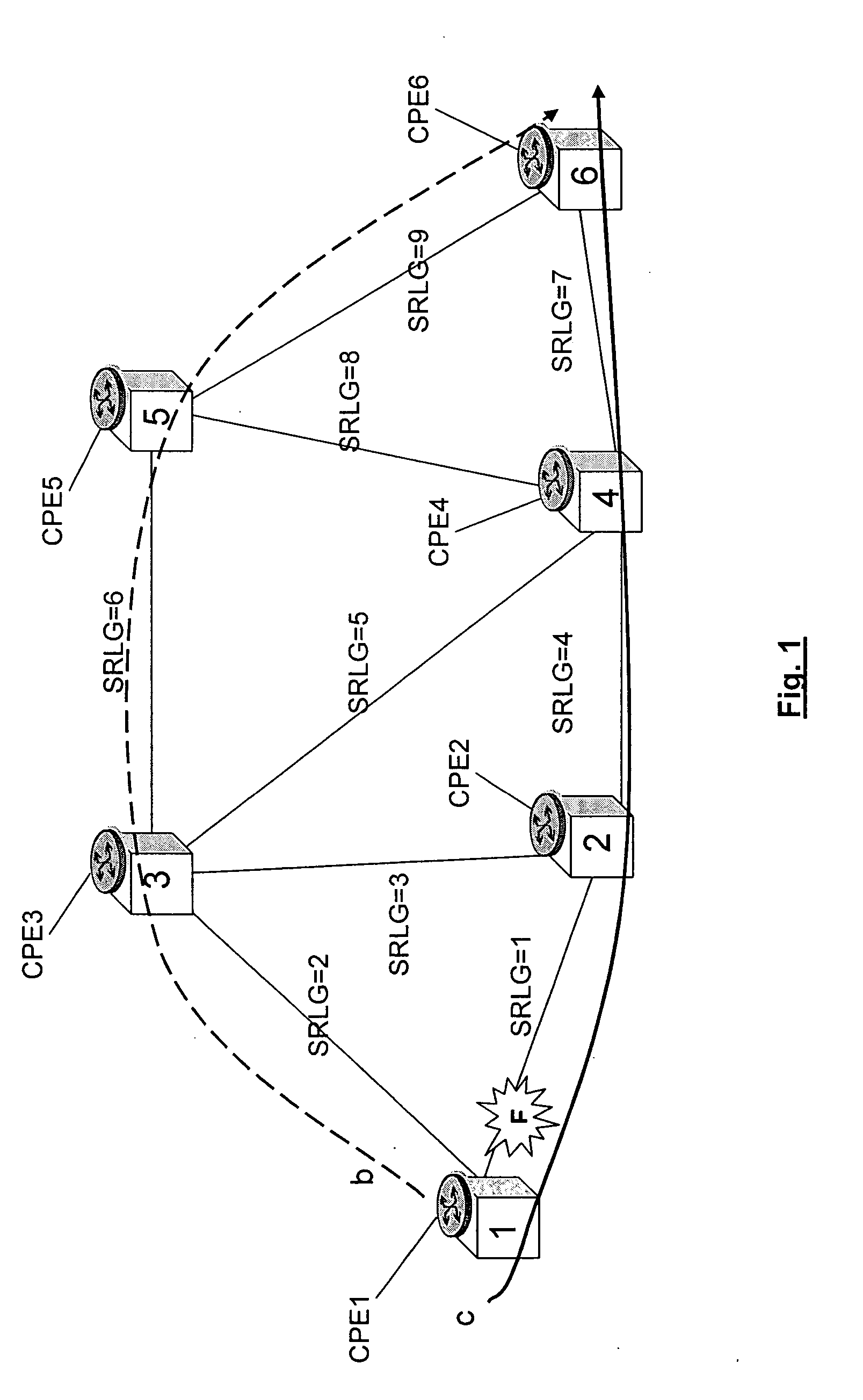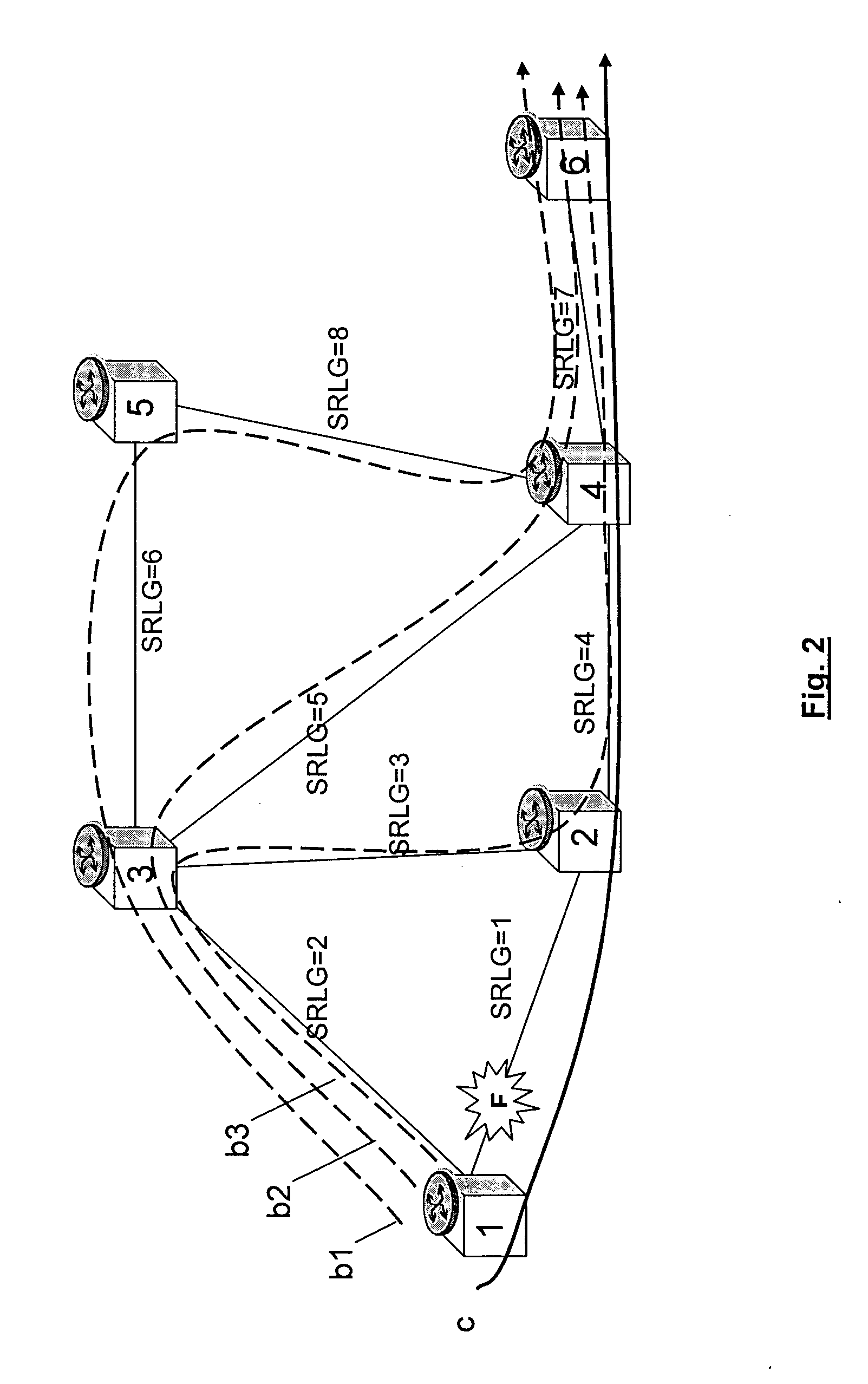Restoration in a telecommunication network
a technology of telecommunication network and connection, applied in the field of telecommunication, can solve the problems of srg diversity requirement failing, disadvantage in finding optimal routes, and requiring more network resources, so as to reduce the possibility of network congestion, improve service quality, and improve network resource utilization
- Summary
- Abstract
- Description
- Claims
- Application Information
AI Technical Summary
Benefits of technology
Problems solved by technology
Method used
Image
Examples
first embodiment
[0033]FIG. 3 shows the invention, wherein the routing algorithm calculates the backup connection taking into account the dynamic parameters of the segments shown in FIG. 3. According to this solution, the calculated backup connection is b3, crossing network elements 1-3-2-4-6. In fact, the possible routes from network element 1 to 6 are 1-3-5-4-6 (b1 in FIG. 1), 1-3-4-6 (b2 in FIG. 1) and 1-3-2-4-6 (b3 in FIG. 1); the sum of parameters p for these routes are 12, 14 and 11 respectively, so that the smallest value will be choosen, correspondent to b3. Contrary to known solutions, the calculated backup connection isn't the shortest available backup connection. More in general, calculation of the backup connection is performed using a group of segments of the network and includes the following steps: [0034] a) using the group of segments, identifying at least two routes (b1, b2 and b3 in FIG. 1) in the network for protecting the nominal connection; [0035] b) evaluating the dynamic param...
second embodiment
[0038]FIG. 4 shows the invention, wherein the routing algorithm calculates the backup connection taking into account both the dynamic parameters and static parameters of the segments, for example the SRLG identifiers. More in particular, the calculation takes into account first only the static parameters and then only the dynamic parameters. According to this solution, the calculated backup connection is b1, crossing network elements 1-3-5-4-6. In fact the routing algorithm calculates three backup connections, b1, b2 and b3 of FIG. 2, taking into account the SRLG identifiers; b3 is discarded, because it has two SRLG identifiers (SRLG=4 and SRLG=7) common to the nominal connection c, while b1 and b2 both have one SRLG identifier (SRLG=7) common to the nominal connection. At this step the algorithm has to select one of the two connections and it needs to know further information for performing the selection, because b1 and b2 are equivalent if considering the SRLG diversity requiremen...
fourth embodiment
[0061] In a fourth embodiment, the calculation is performed taking into account at least one of the new types of static features indicated above.
PUM
 Login to View More
Login to View More Abstract
Description
Claims
Application Information
 Login to View More
Login to View More - R&D
- Intellectual Property
- Life Sciences
- Materials
- Tech Scout
- Unparalleled Data Quality
- Higher Quality Content
- 60% Fewer Hallucinations
Browse by: Latest US Patents, China's latest patents, Technical Efficacy Thesaurus, Application Domain, Technology Topic, Popular Technical Reports.
© 2025 PatSnap. All rights reserved.Legal|Privacy policy|Modern Slavery Act Transparency Statement|Sitemap|About US| Contact US: help@patsnap.com



